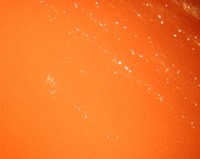
(MPLPCR)
Mycoplasma and Ureaplasma are bacteria that do not have a cell wall, which renders antibiotics that target cell wall synthesis (Beta-lactams such as penicillin) non-effective. Mycoplasma is the causative agent of several human diseases such as atypical pneumonia. Ureaplasma has been implicated in urethritis, premature birth, and neonatal atypical pneumonia. These organisms are difficult to culture and stain.
Mycoplasma PCR has replaced Mycoplasma culturing in our Clinical Microbiology Laboratory. PCR is able to detect fastidious Mycoplasma species, such as Mycoplasma genitalium, that do not grow in traditional Mycoplasma culture. Results are available in 2 to 3 days, compared to the 10 to 28 days required for culture. MPLPCR detects Mycoplasma pneumoniae, Mycoplasma genitalium, Mycoplasma hominis, Ureaplasma urealyticum, and Ureaplasma parvum.
Our Mycoplasma real-time PCR assay via the LightCycler platform utilizes genus-specific primers and species-specific fluorescence resonance energy transfer (FRET) probes for the identification of Mycoplasma and Ureaplasma from clinical specimens. This provides a powerful and highly sensitive tool for the rapid diagnosis of these organisms.